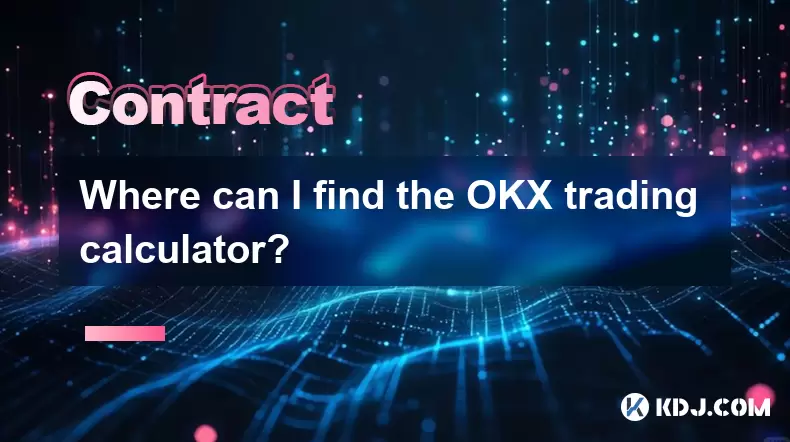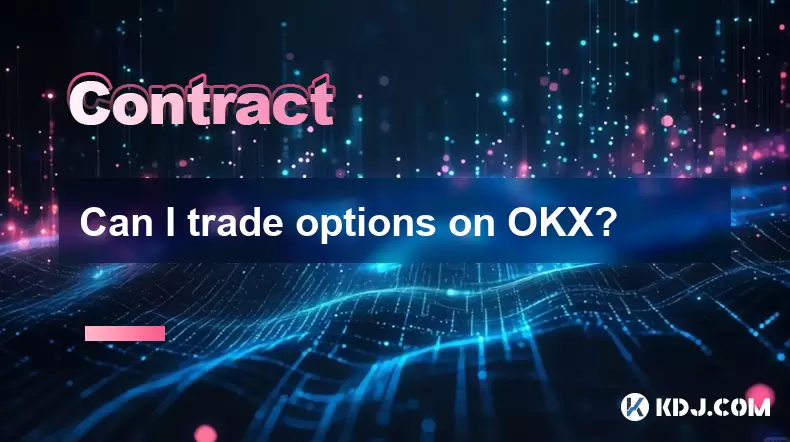-
 Bitcoin
Bitcoin $117500
2.15% -
 Ethereum
Ethereum $3911
6.19% -
 XRP
XRP $3.316
10.79% -
 Tether USDt
Tether USDt $1.000
0.01% -
 BNB
BNB $787.2
2.24% -
 Solana
Solana $175.2
4.15% -
 USDC
USDC $0.9999
0.00% -
 Dogecoin
Dogecoin $0.2225
8.40% -
 TRON
TRON $0.3383
0.28% -
 Cardano
Cardano $0.7868
6.02% -
 Stellar
Stellar $0.4382
9.34% -
 Hyperliquid
Hyperliquid $40.92
7.56% -
 Sui
Sui $3.764
7.63% -
 Chainlink
Chainlink $18.48
10.66% -
 Bitcoin Cash
Bitcoin Cash $582.1
1.88% -
 Hedera
Hedera $0.2601
6.30% -
 Avalanche
Avalanche $23.33
4.94% -
 Ethena USDe
Ethena USDe $1.001
0.02% -
 Litecoin
Litecoin $122.3
2.04% -
 UNUS SED LEO
UNUS SED LEO $8.969
-0.27% -
 Toncoin
Toncoin $3.339
0.86% -
 Shiba Inu
Shiba Inu $0.00001287
4.30% -
 Uniswap
Uniswap $10.43
7.38% -
 Polkadot
Polkadot $3.861
5.08% -
 Dai
Dai $1.000
0.02% -
 Bitget Token
Bitget Token $4.513
3.41% -
 Monero
Monero $267.7
-6.18% -
 Cronos
Cronos $0.1499
4.14% -
 Pepe
Pepe $0.00001110
5.15% -
 Aave
Aave $284.9
8.28%
What is the reason for Bitcoin contract liquidation?
Bitcoin contract liquidations stem from leverage amplifying losses during volatile market swings, triggered by margin calls when collateral falls below exchange requirements; higher leverage increases this risk, alongside algorithmic trading and cascading liquidations.
Mar 02, 2025 at 11:30 am

What is the Reason for Bitcoin Contract Liquidation?
Key Points:
- Understanding Bitcoin Contracts: Bitcoin contracts, primarily offered on cryptocurrency exchanges, allow traders to speculate on the price of Bitcoin without actually owning it. This involves leveraging, significantly amplifying potential profits but also losses.
- Margin Calls and Liquidation: These contracts require users to maintain a certain level of collateral (margin). When the price moves against a trader's position and the margin falls below a specified threshold, a margin call is triggered. If the trader fails to deposit more funds to meet the margin requirement, the exchange liquidates the position to cover losses.
- Leverage and Risk: The primary driver of liquidations is the use of leverage. Higher leverage magnifies both gains and losses, increasing the likelihood of liquidation even with small price movements.
- Market Volatility: Sudden and sharp price swings in Bitcoin are a major contributor to liquidations. Unexpected news, regulatory changes, or large sell-offs can quickly wipe out a trader's margin.
- Technical Factors: Algorithmic trading, cascading liquidations, and order book imbalances can exacerbate price volatility and lead to a surge in liquidations.
Detailed Explanation of Bitcoin Contract Liquidation Reasons:
- The Role of Leverage in Bitcoin Contract Trading:
Leverage in Bitcoin contract trading is a double-edged sword. It allows traders to control a larger position than their actual capital allows, significantly amplifying potential profits. For instance, with 10x leverage, a $100 investment can control a $1000 position. However, this same leverage also magnifies losses. A 1% adverse price movement with 10x leverage results in a 10% loss of the trader's initial capital. This is the core mechanism behind many Bitcoin contract liquidations. Traders often underestimate the power of leverage, particularly during volatile market conditions. They might believe that a small price movement won't significantly impact their position, overlooking the multiplicative effect of leverage. The psychology of trading also plays a role; the thrill of potentially large gains can lead traders to employ higher leverage than they can comfortably manage, increasing the risk of liquidation. The leverage multiplier isn't simply a number; it's a risk multiplier, directly proportional to the potential for both immense profits and catastrophic losses. Understanding and responsibly managing leverage is paramount to avoiding liquidation in Bitcoin contract trading. Many experienced traders advocate for using lower leverage, especially during periods of heightened market uncertainty, prioritizing risk management over the allure of potentially higher returns. The choice of leverage should be a carefully considered decision based on a trader's risk tolerance, market analysis, and understanding of the potential consequences.
- Market Volatility and its Impact on Bitcoin Contract Liquidations:
The cryptocurrency market, especially Bitcoin, is known for its volatility. Sudden price swings, both upward and downward, are commonplace. These fluctuations can trigger margin calls and liquidations even for traders who have carefully managed their leverage. News events, regulatory announcements, and large-scale trading activities can all cause significant price changes in a short period. For example, a surprise announcement from a major regulatory body about cryptocurrency restrictions could cause a sharp sell-off, resulting in massive liquidations across the market. Similarly, a sudden surge in buying pressure can lead to rapid price increases, but this can also trigger liquidations for traders holding short positions (betting on a price decrease). The unpredictable nature of these events makes it extremely difficult to predict and avoid all instances of liquidation. Traders must be prepared for unexpected market movements and employ robust risk management strategies to mitigate the potential impact of volatility. This could involve setting stop-loss orders to automatically exit a position when it reaches a predetermined loss threshold, diversifying their portfolio across multiple assets, and only using leverage they can comfortably afford to lose. Furthermore, staying informed about market news and trends can help traders anticipate potential price swings and adjust their positions accordingly. However, even the most diligent trader cannot fully eliminate the risk of liquidation in a volatile market like Bitcoin's.
- Technical Factors Contributing to Bitcoin Contract Liquidations:
Beyond market sentiment and news, several technical factors can contribute to Bitcoin contract liquidations. Algorithmic trading, for instance, employs computer programs to execute trades based on predefined parameters. These algorithms can react very quickly to price changes, potentially exacerbating volatility and triggering a cascade of liquidations. If many algorithms are programmed to sell at the same price point, a sudden sell-off can occur, pushing the price down and triggering margin calls for traders holding long positions. This effect is often amplified by the use of leverage, as even a small price drop can lead to significant losses and liquidations. Order book imbalances can also contribute to liquidations. If there's a significant imbalance between buy and sell orders, a large sell order can overwhelm the available buy orders, causing a sharp price drop. This can lead to a wave of liquidations as traders' margins are depleted. Cascading liquidations are another significant concern. When one trader's position is liquidated, it can put further downward pressure on the price, triggering margin calls for other traders holding similar positions. This chain reaction can lead to a rapid decline in price and a significant increase in liquidations, further amplifying the market's volatility. Understanding these technical factors is crucial for navigating the complexities of Bitcoin contract trading and mitigating the risk of liquidation. Careful monitoring of market depth, order book imbalances, and the overall market sentiment can help traders anticipate potential price swings and adjust their positions accordingly. However, the inherent complexity and interconnectedness of these factors make it challenging to fully predict and prevent all instances of liquidation.
- Understanding Margin Calls and the Liquidation Process:
A margin call is a notification from an exchange that a trader's margin (collateral) is insufficient to support their open positions. This usually happens when the price of Bitcoin moves against the trader's position, resulting in a decrease in the value of their collateral. The exchange sets a margin requirement, which is the minimum amount of collateral a trader must maintain. If the margin falls below this level, the exchange issues a margin call, giving the trader a limited time to deposit more funds to meet the requirement. Failure to meet the margin call results in liquidation. The liquidation process involves the exchange automatically closing the trader's positions to recover the losses incurred. The exchange sells the trader's Bitcoin contracts to cover the outstanding debt, and any remaining funds are returned to the trader. The liquidation price can be significantly lower than the market price, leading to greater losses for the trader. The speed and efficiency of the liquidation process vary depending on the exchange, but it is usually automated to minimize the impact on the market. Understanding how margin calls and liquidations work is crucial for all Bitcoin contract traders. Knowing the margin requirements of the exchange, regularly monitoring their positions, and having a plan for managing margin calls are essential for mitigating the risk of liquidation. It's also important to understand that liquidation is not always a result of negligence; even experienced traders can face unexpected market swings that lead to margin calls and liquidations. The key is to manage risk effectively and be prepared for the possibility of losing some or all of the invested capital.
FAQs:
Q: What is a Bitcoin contract?
A: A Bitcoin contract is a derivative that allows traders to speculate on the price of Bitcoin without actually owning it. It's a contract between the trader and the exchange, where the trader agrees to buy or sell Bitcoin at a future price. This enables traders to profit from both rising and falling prices (long and short positions).
Q: What is leverage in Bitcoin contract trading?
A: Leverage is the ability to control a larger position than your actual capital allows. For example, 10x leverage means you can control a $1000 position with only $100 of your own money. While this magnifies potential profits, it also significantly amplifies losses.
Q: What is a margin call?
A: A margin call is a notification from an exchange that your collateral (margin) is insufficient to support your open positions. You need to deposit more funds to meet the margin requirement, or your position will be liquidated.
Q: What is liquidation in Bitcoin contract trading?
A: Liquidation is the automatic closing of your positions by the exchange when you fail to meet a margin call. The exchange sells your contracts to cover the losses, and you may lose some or all of your invested capital.
Q: How can I avoid Bitcoin contract liquidation?
A: Avoiding liquidation requires careful risk management. This includes using lower leverage, setting stop-loss orders, diversifying your portfolio, monitoring your positions closely, understanding market volatility, and staying informed about market news and trends. No strategy guarantees against liquidation, however, as unexpected market movements can always occur.
Disclaimer:info@kdj.com
The information provided is not trading advice. kdj.com does not assume any responsibility for any investments made based on the information provided in this article. Cryptocurrencies are highly volatile and it is highly recommended that you invest with caution after thorough research!
If you believe that the content used on this website infringes your copyright, please contact us immediately (info@kdj.com) and we will delete it promptly.
- Stablecoins, Hong Kong, and On-Chain Finance: Navigating the Regulatory Maze
- 2025-08-08 12:30:12
- Tron's Sell-Off Spurs Altcoin Shift: What's Next for TRX?
- 2025-08-08 08:30:12
- Euler, DeFi, and Coinbase: A New York Minute on the Latest Buzz
- 2025-08-08 12:30:12
- RUVI Presale: Is the Growth Potential Real?
- 2025-08-08 09:10:12
- Sleep Token's US Takeover: Thornhill Rides the 'Even In Arcadia' Wave
- 2025-08-08 08:30:12
- FTT Token's Wild Ride: Creditor Repayments vs. Market Drop - A New Yorker's Take
- 2025-08-08 07:10:12
Related knowledge

What is the distinction between mark price and last price on KuCoin?
Aug 08,2025 at 01:58pm
Understanding the Basics of Price in Cryptocurrency TradingIn cryptocurrency exchanges like KuCoin, two key price indicators frequently appear on trad...

What are the specific maker and taker fees on KuCoin Futures?
Aug 08,2025 at 08:28am
Understanding Maker and Taker Fees on KuCoin FuturesWhen trading on KuCoin Futures, users encounter two primary types of fees: maker fees and taker fe...

What is the maximum leverage available on KuCoin Futures?
Aug 08,2025 at 10:21am
Understanding Leverage in KuCoin Futures TradingLeverage in KuCoin Futures allows traders to control a larger position size using a smaller amount of ...

What is the minimum deposit for OKX contracts?
Aug 08,2025 at 07:00am
Understanding OKX Contract Trading BasicsOKX is one of the leading cryptocurrency derivatives exchanges, offering a wide range of perpetual and future...

Where can I find the OKX trading calculator?
Aug 08,2025 at 07:49am
Understanding the OKX Trading Calculator FunctionalityThe OKX trading calculator is a powerful analytical tool designed to assist traders in estimatin...

Can I trade options on OKX?
Aug 08,2025 at 11:01am
Understanding Options Trading on OKXYes, you can trade options on OKX. OKX is one of the leading cryptocurrency derivatives exchanges that offers a de...

What is the distinction between mark price and last price on KuCoin?
Aug 08,2025 at 01:58pm
Understanding the Basics of Price in Cryptocurrency TradingIn cryptocurrency exchanges like KuCoin, two key price indicators frequently appear on trad...

What are the specific maker and taker fees on KuCoin Futures?
Aug 08,2025 at 08:28am
Understanding Maker and Taker Fees on KuCoin FuturesWhen trading on KuCoin Futures, users encounter two primary types of fees: maker fees and taker fe...

What is the maximum leverage available on KuCoin Futures?
Aug 08,2025 at 10:21am
Understanding Leverage in KuCoin Futures TradingLeverage in KuCoin Futures allows traders to control a larger position size using a smaller amount of ...

What is the minimum deposit for OKX contracts?
Aug 08,2025 at 07:00am
Understanding OKX Contract Trading BasicsOKX is one of the leading cryptocurrency derivatives exchanges, offering a wide range of perpetual and future...

Where can I find the OKX trading calculator?
Aug 08,2025 at 07:49am
Understanding the OKX Trading Calculator FunctionalityThe OKX trading calculator is a powerful analytical tool designed to assist traders in estimatin...

Can I trade options on OKX?
Aug 08,2025 at 11:01am
Understanding Options Trading on OKXYes, you can trade options on OKX. OKX is one of the leading cryptocurrency derivatives exchanges that offers a de...
See all articles

























































































